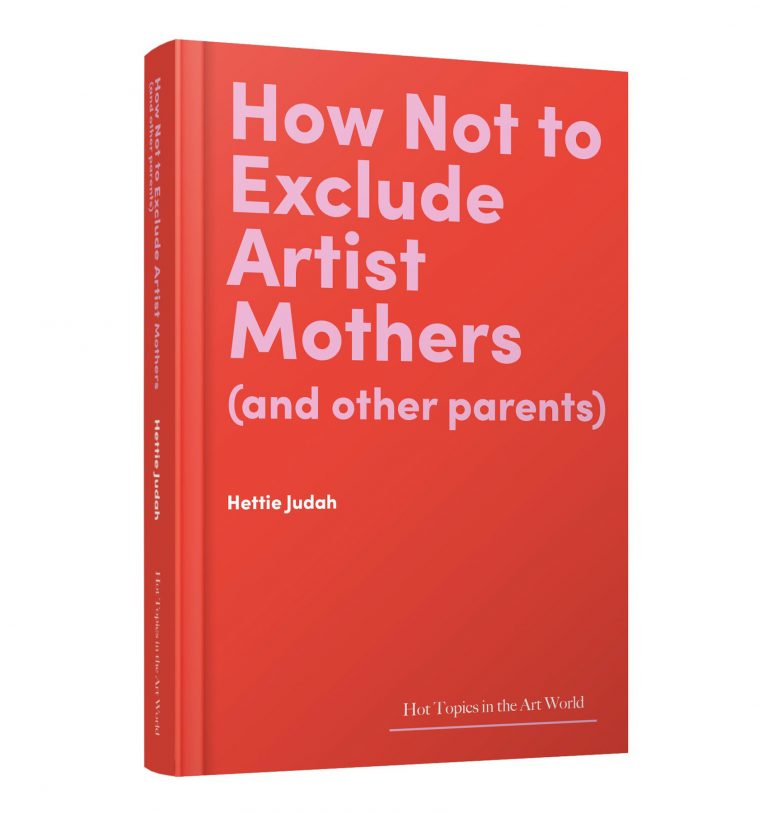Hettie Judah: The Artist-Mother Paradigm

“Parenting is complex and consumes time and attention; it places huge demands on your body; it restricts your time and mobility,” writes art critic and author Hettie Judah in her latest book, How Not to Exclude Artist Mothers (and other parents). These parental challenges are not unique to artists, but prove especially insidious for those in a precarious profession within a fickle industry. Backed by insights from Judah’s interviews with contemporary working artists, the book walks through many of the major institutions of the art world (such as art school, commercial galleries, and residencies) and captures what’s gone wrong and where there are already working solutions. She writes: “What is at issue here is not parenthood itself, but structures and habits within the art world that make it difficult for artist parents to fully participate.” In this interview, we speak about the difficulties of being a parent and a professional artist, prejudices against domesticity, and the need for an artist-mother paradigm.
The press release for your book describes it as “polemical.” After reading the book, however, I thought that didn’t seem a good descriptor because a polemic tends to be a hot-headed, emotional rant, whereas your book struck me as far more sober and research-based. How do you see it?
Well, I think it is quite emotional. A number of the people that have read it so far have said they found it a really emotional experience, maybe rooted in seeing the experiences that they just took for granted reflected back at them, and realizing that, actually, things could be a different way. I certainly felt a lot of fury working on this. And I certainly found the initial studies I did to be very, very upsetting.
Tell us more about that.
A few years ago, I did a study at the invitation of Kate McMillan, where I interviewed about 50 or so artist mothers about the impact of motherhood on their careers. It was really a question they hadn’t been asked before. They hadn’t been asked about really anything to do with motherhood, because motherhood is somewhat an unspeakable state in the art world. You know, there are artists mothers but often they’re very quiet about it, whether they’re hiding it actively, or just keeping it extremely private. A lot of the responses I got back, it was almost like I’d turned the faucet on: I got these extraordinary experiences shared with me of deep upset, deep hurt, and a sense of invisibility. Rooted in that, I think, is that the art world is not accepting the whole artist, they’re accepting the artist that conforms to what we historically think of as being “the artist,” which I guess is the really withdrawn, carefree, male artist.
From that study, I published a short essay called “Full, Messy and Beautiful,” which came out at the end of 2020. And then, having identified many, many areas in which the art world structurally pitched against mothers and artists with caring responsibilities, I then worked with a group of about 30 artists to put together a manifesto called “How Not to Exclude Artist Parents,” which came out around the start of 2021. That really seemed to strike a chord with people, and it’s now been translated into 16 different languages and into an audio recording, so it’s really spread around the world.
My desire with the manifesto was to provide artists with a toolkit for articulating the exclusion that they were experiencing, to articulate really simple ways in which things could be otherwise, and to invite institutions and residency programs to be more accommodating and thoughtful. The book is, as you say, very based in research, although the way I see it is this: it was quite important for me that this book would have a sense of poly-vocality. So, for it to not just be me talking about what I thought was right, but to give a sense of the fact that all artists are different, all people are different, and what’s right for one won’t always be right for everyone. I really wanted to see how we could do things differently, so I spoke to artists and organizations around the world that were essentially setting up alternative structures and suggesting alternative ways of doing things, and really questioning the established and received truths in the art world. I wanted to present a menu of different approaches that we might take, and put as much as I could into other people’s voices to allow them to speak for themselves.
This is an excerpt from a longer interview, published online in full on Riding the Dragon.
